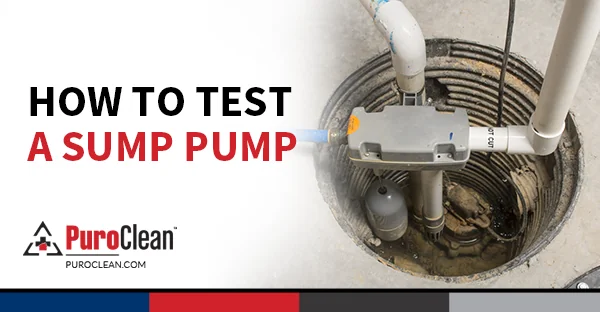Water in your crawl space can be more than just a nuisance; it can lead to significant damage to your home. From structural issues to mold growth, moisture in this area is something that needs to be tackled quickly. We’ll explore the common causes of water in crawl space, discuss prevention methods, and provide solutions if you’re dealing with this issue. If you’re experiencing water problems, especially after a storm, you might need help from professionals like those offering water damage restoration, Greer SC, or from your local experts.
Common Causes of Water in Crawl Space
Water in the crawl space can occur for various reasons, and understanding the cause is the first step in prevention. Here are some common culprits:
- Poor Drainage: Inadequate drainage systems can lead to rain water in crawl spaces, especially after a downpour. When water isn’t properly directed away from your home, it can seep inside, leading to issues such as water in crawl space after rain.
- Plumbing Leaks: A small leak in your plumbing can introduce unwanted moisture into the crawl space. Over time, this can lead to significant water accumulation.
- Groundwater Seepage: Water from the ground can seep into the crawl space, particularly if your home is built in an area with a high water table or poor soil drainage.
Read About – What Causes Water Damage?
Is Water in Crawl Space After Heavy Rain Normal?
You might wonder if it’s normal to find water in the crawl space after heavy rain. While some moisture can be expected in areas with high rainfall, standing water or consistent wet spots are not normal. Water in the crawl space after heavy rain normally should not be dismissed as it can be a sign of underlying drainage or structural problems that need immediate attention.
The Dangers of Standing Water in Crawl Space
Standing water in your crawl space poses several risks:
- Mold Growth: Moisture creates the perfect environment for mold, which can quickly spread and lead to health issues for you and your family. Mold spores can affect indoor air quality and trigger respiratory problems, allergies, and other health concerns. Mold remediation can be costly and complex, involving thorough cleaning and sometimes removing contaminated materials. Preventing standing water in your crawl space is necessary to avoid these health risks and the financial burden of mold removal.
- Structural Damage: Water damage in crawl space can weaken the structural integrity of your home. Prolonged exposure to moisture can lead to wood rot, compromising beams, joists, and other wooden components of your home’s foundation. Rusted metal components, such as fasteners and supports, can also degrade over time. This structural damage can lead to expensive repairs and potential safety hazards. Handling water issues quickly helps maintain your home’s stability and avoids costly repairs down the line.
Prevention Tips: How to Keep Your Crawl Space Dry
Preventing water from entering your crawl space is essential for maintaining a healthy home. Regular inspections, especially after rain, are key for detecting any signs of moisture early and preventing water in the crawl space from becoming a bigger problem. Here are some practical tips:
- Improve Drainage: Make sure that your home’s gutters and downspouts direct water away from the foundation. Proper grading around your home can also prevent water from pooling near the crawl space. Proper drainage helps keep excess water from seeping into the crawl space and causing moisture-related issues.
- Install a Vapor Barrier: A vapor barrier is a plastic sheet that covers the ground in your crawl space, preventing moisture from the soil from entering the space. This barrier helps to keep the crawl space dry and reduces the risk of mold and rot by blocking moisture from the soil below.
- Ventilation: Make sure your crawl space has adequate ventilation to allow moisture to escape. This can reduce the chances of condensation forming and creating moisture problems. Proper ventilation also helps maintain a more balanced humidity level, further protecting your home from potential water damage.
Solutions: How to Address Water in the Crawl Space
If you already have water in your crawl space, here are some steps you can take to tackle the issue:
Sump Pump Installation
Installing a sump pump can successfully remove excess water from your crawl space. The pump collects water in a designated pit and pumps it away from your home’s foundation, preventing it from accumulating and causing further issues.
Seal Foundation Cracks
If water is seeping through foundation cracks, sealing them with a waterproof sealant can help. This simple fix can stop water from entering your crawl space, protecting your home from additional moisture.
Hire Professionals
For severe or persistent water problems, it’s wise to call in professionals. They have the expertise and equipment needed to handle the situation properly, ensuring that your crawl space is thoroughly dried and protected from future water damage.
Read About – Water Damage Restoration Cost
When to Call a Professional
Sometimes, DIY methods aren’t enough to keep your crawl space dry. If you notice persistent moisture, mold growth, or structural damage, it’s time to seek professional help. Hiring a certified water damage restoration service ensures that the problem is handled correctly and prevents further damage to your home. For authoritative guidance, refer to FEMA’s recommendations on water damage and mold prevention.
Keep Your Crawl Space Dry – Call PuroClean of Greer Today!
Don’t let water damage disrupt your home and your peace. At PuroClean of Greer, we specialize in tackling crawl space issues with expertise and precision. Whether you’re dealing with standing water, or mold, or just want to prevent future problems, our team is ready to help. Contact us today for a thorough inspection and customized solutions to keep your crawl space dry and your home safe. Call us at (864) 523-6633 or fill out an online form on our website.




 PuroClean of Greer
PuroClean of Greer